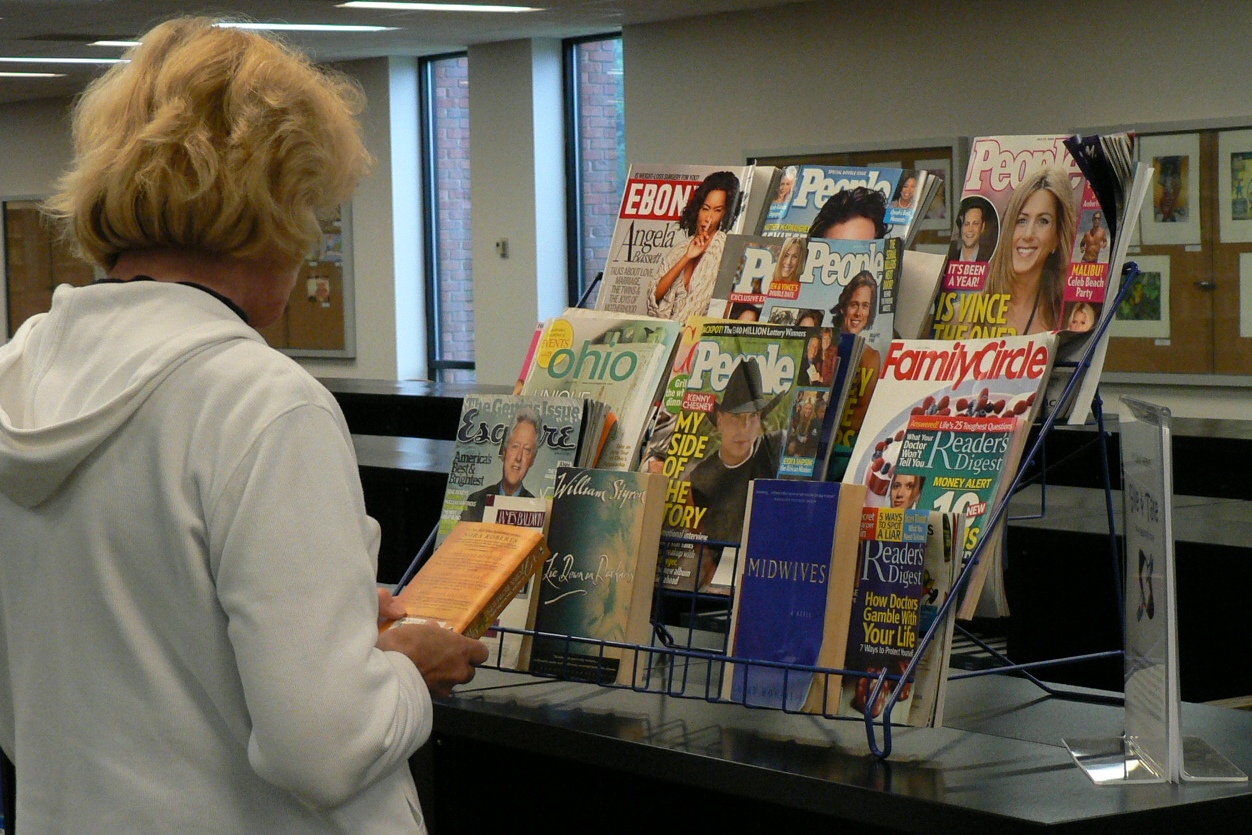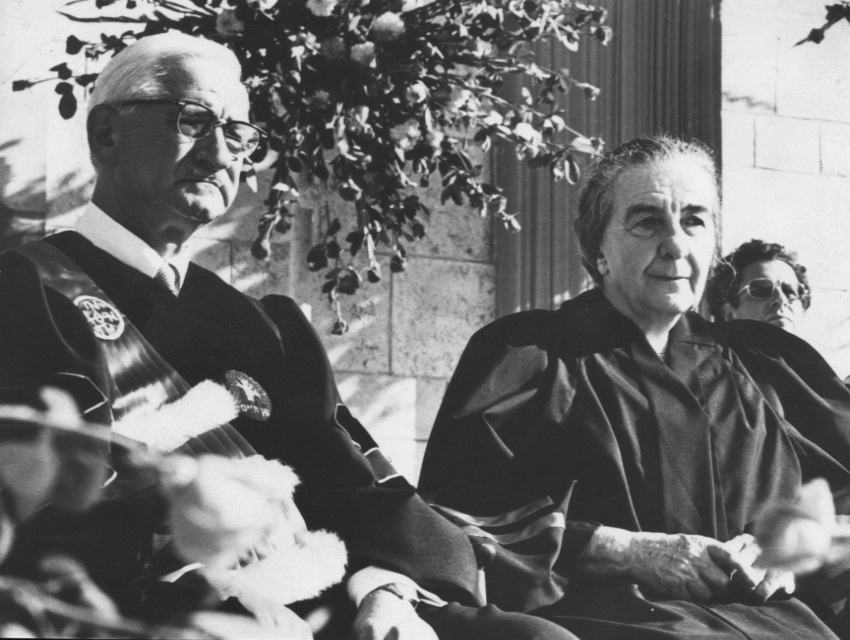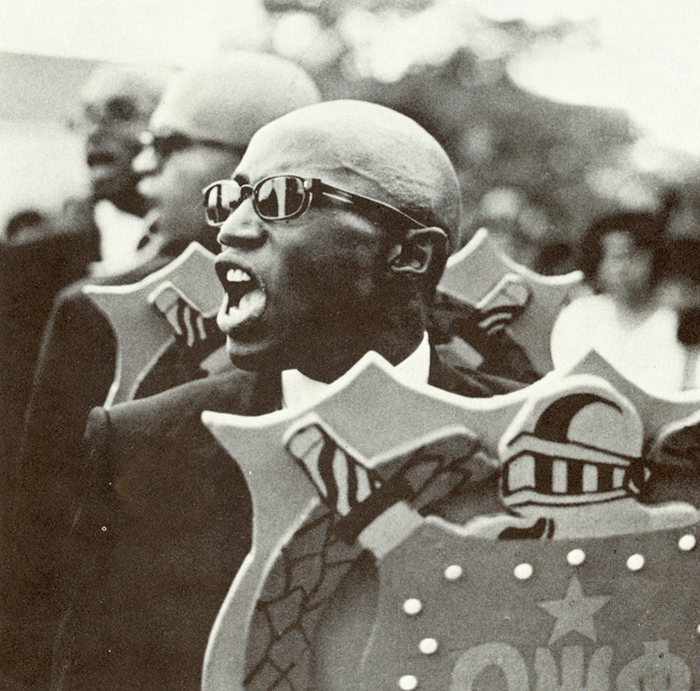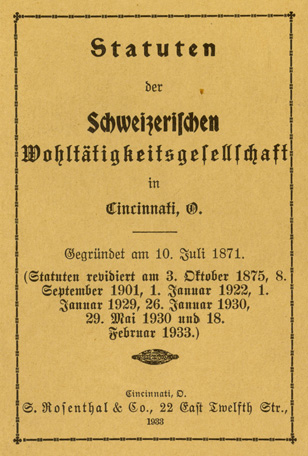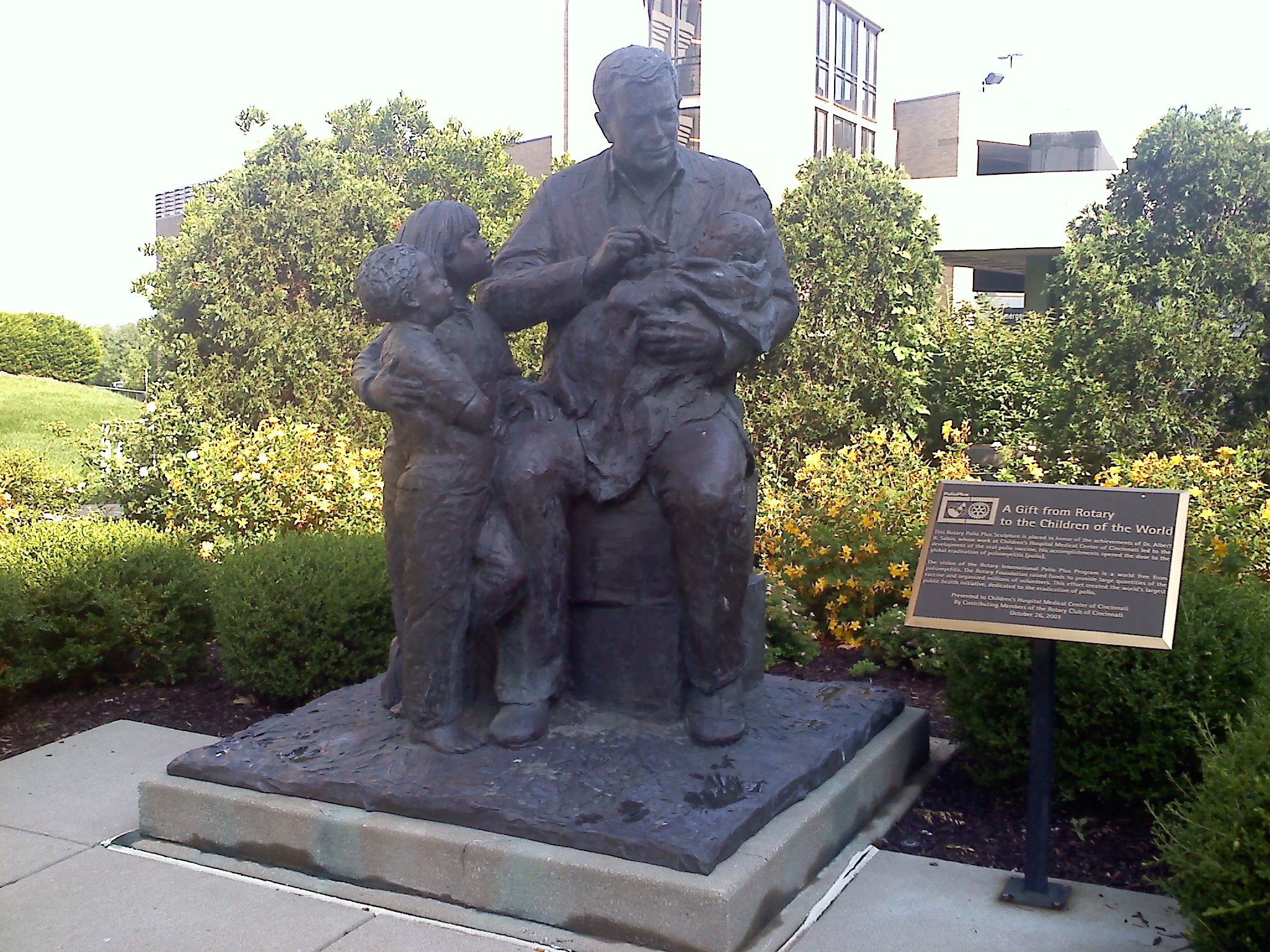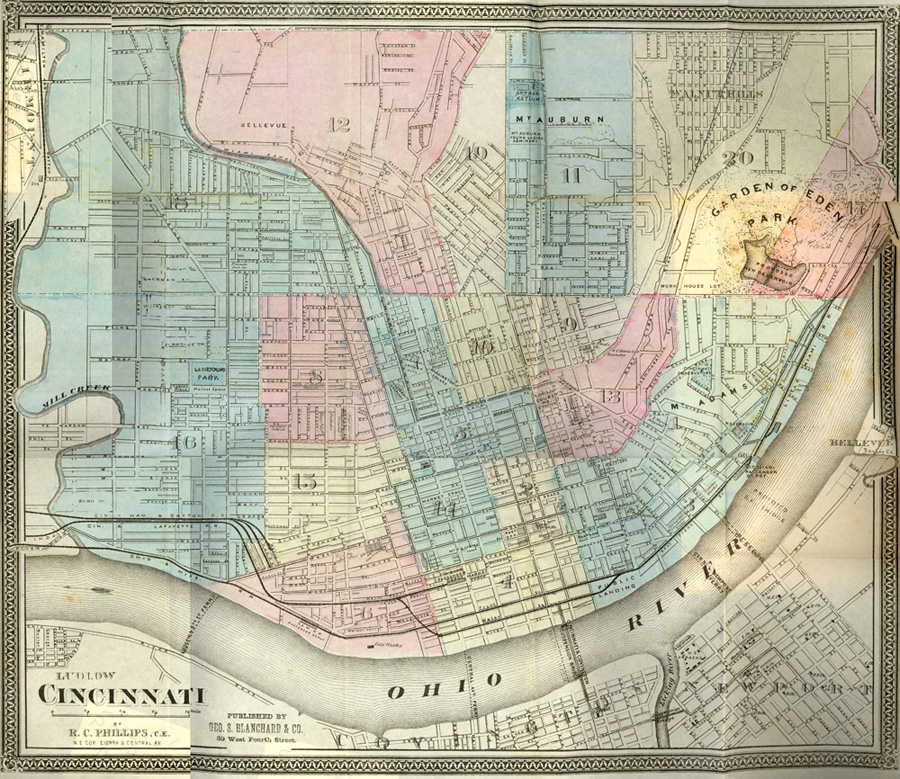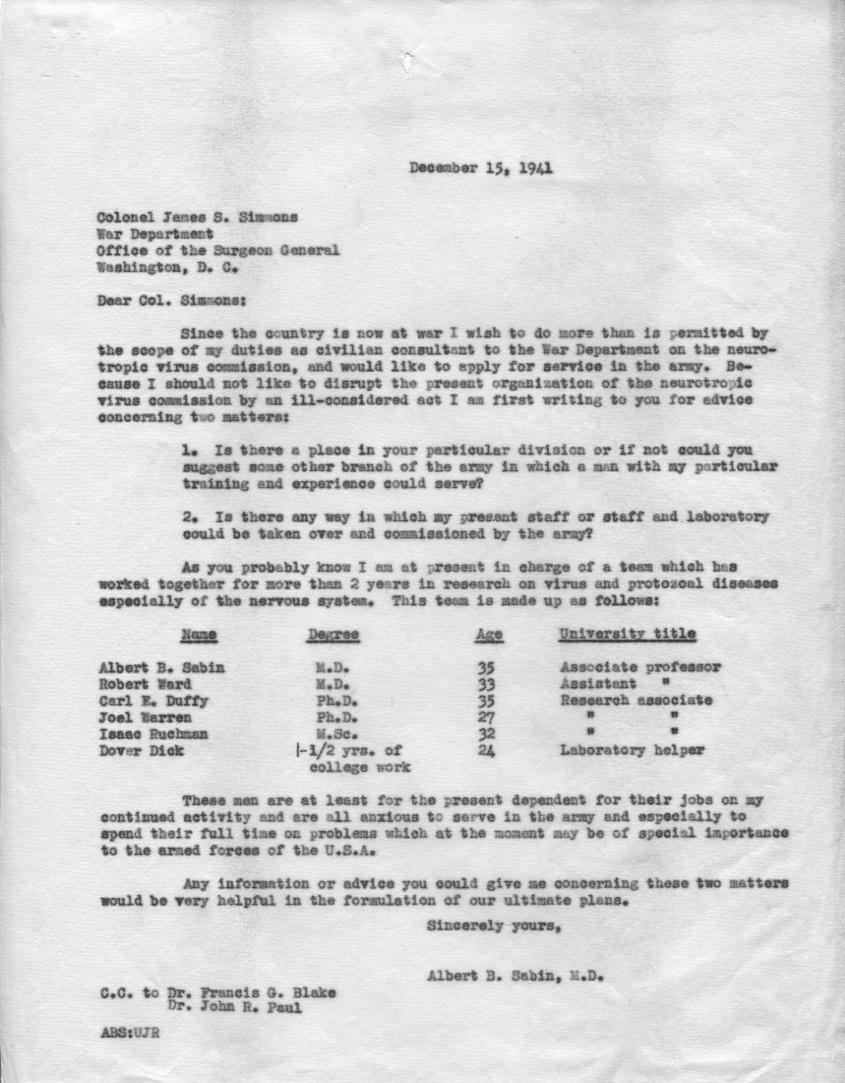One man’s trash is another man’s treasure so don’t throw away previously read magazines and journals. Donate your gently used magazines and journals to the Give & Take Exchange Rack. Please remove names and addresses from materials and drop them off at the information desk. Browse the rack and pick up something new to you. It’s an easy and inexpensive way to add to your collection and broaden your reading horizons. The Exchange rack is currently located in the Reference section of the RWC Library. Leftover materials are recycled. Stop by today!
The Albert B. Sabin Digitization Project: The Weizmann Institute of Science
After Dr. Sabin’s long career at the University of Cincinnati and the Children’s Hospital Research Foundation, he became the President of the Weizmann Institute of Science in Rehovot, Israel, from 1970 until 1972. His archives contain much of his correspondence and photographs from his time at the Institute.
According to the Weizmann Institute of Science’s website, Dr. Sabin was the first President of the Institute that was required to be a scientist. While serving as President, Dr. Sabin reorganized the Institute into “five scientific Faculties”: Mathematics, Physics, Chemistry, Biophysics-Biochemistry, and Biology. While serving as President, Dr. Sabin rubbed elbows with some pretty important people, so I wanted to share some of these photographs with you. Continue reading
Additions to ARB's Greek Life Exhibit
By Janice Schulz
Additions and updates have been made to ARB’s exhibit Going Greek: Fraternity and Sorority Life at the University of Cincinnati.
Pledging traditions of African-American fraternities are highlighted in an article from the Autumn, 1981, edition of Clifton Magazine, now available on the 1980 and Beyond history page. During the anti-hazing controversies of the early 1980s, long-time pledging rituals practiced by Black fraternities, such as marching and branding, were brought into focus and their legality was questioned. Members defended these activities while outsiders tended to view them with a more critical eye. Continue reading
New Accession in the German Americana Collection
A new collection containing materials of the Swiss Benevolent Association of Cincinnati, Ohio has just been processed in the Archives and Rare Books Library and a finding aid is now accessible at http://rave.ohiolink.edu/archives/ead/OhCiUAR0270. This Cincinnati-area organization was founded in 1871, with the objective of bringing Swiss citizens together to cultivate traditions and provide support, and remains active today. From its inception, the association has not only organized social events, but has also provided assistance (i.e. funeral costs, welfare services, and scholarships) for members and German-Swiss related charities. This collection, of a primarily German-speaking group, adds a new dimension to the UC Libraries’ other holdings in German Americana. Continue reading
T. M. Berry Project: Great Living Cincinnatian Award
By Laura Laugle
In 1984, while Theodore M. Berry was heavily involved in the battle to end racial segregation in Cincinnati Public Schools, the Cincinnati Chamber of Commerce chose him as a “Great Living Cincinnatian.” This prestigious designation by the Chamber is part of the organization’s annual honor conferred on local citizens who have made a substantial impact on Cincinnati life. Joining Berry in being honored that year was Cincinnati Bell CEO, Richard T. Dugan. Every year since 1967, the Chamber of Commerce (now called the Cincinnati USA Regional Chamber) has chosen a select few Cincinnatians as “Great Living Cincinnatians” based upon their achievement in five categories over a lifetime of work: community service, business and civic attainment on a local, state and national or international level, leadership, awareness of the needs of others, and distinctive accomplishments that have brought favorable attention to their community, institution or organization. Continue reading
The Albert B. Sabin Digitization Project: Dr. Sabin’s Name
A post from a couple weeks ago where I mention the renaming of the road outside of our building to Albert Sabin Way made me think of other places that have Dr. Sabin’s name. I thought I would briefly touch on some of the places that are named after him.
One very close to where the Winkler Center is located is the Albert B. Sabin Education and Conference Center, which is located on the Cincinnati Children’s Hospital Medical Center’s Main Campus. In 1999, the medical center announced the naming of the building after Dr. Sabin. The building opened in 2000 as part of a large renovation program for the campus. According to the hospital’s website, this Center contains meeting space, the hospital’s libraries, a cafeteria, and many hospital services. At the time of the announcement of the naming, a press release stated, “In naming our center for Dr. Sabin, we hope to inspire all of those we teach to follow his example.” Continue reading
T. M. Berry Project: Berry and the Fight for Fair Housing in Cincinnati, Part 3
By Laura Laugle
All these delays caused one huge problem: members who had been in need of homes back in 1947 found housing before homes could be built for them at Hollydale in the mid to late 1950s. The result was an enormous expense for the Cedar Grove Homestead Association, which had to refund many of its original members’ investments. Gail Berry remembers her father going to Cedar Grove meetings and to the building site at Hollydale in Springfield Township many times during her childhood. Fortunately, as Berry points out in the article to the right, this type of persistence paid off and the association managed to build a safe and stable community for Cincinnati’s black residents.
Approximately 200 homes were built in the subdivision in the middle part of the 20th century. Thanks to the efficiency of the building techniques used, the homes in Hollydale were relatively affordable. However, the people who ended up settling there were the same people who could afford to wait for houses to be built to his/her specifications and who generally had steady if not large incomes. At first glance then, it would seem that Hollydale would have had little effect on the massive overpopulation problems in Cincinnati’s low income black neighborhoods. However, this is one instance (of only a few) where “trickle down” economics seems to apply beautifully. People moving to Hollydale cleared up at least a little space in the basin of the city which, when combined with additional new housing projects like Park Town, Garden Hill and Richmond Village for which Berry acted as counsel and others like Laurel Homes and Lincoln Court eventually created enough housing to relieve much of the congestion plaguing poor black neighborhoods. Continue reading
Historical Cincinnati Maps
By Janice Schulz
The Archives & Rare Books Library has digitized some historical Cincinnati maps dating from 1802 – 1929 and has made them available for research on our website. The maps are all located in materials from our Rare Books Collection and are scanned at a high resolution to provide detail for researchers.
The maps provide both geographical and social information about the City of Cincinnati through the years. Several of the maps included keys or labels indicating buildings and landmarks and can show trends in public services and the development of particular communities. Continue reading
The Albert B. Sabin Digitization Project: Dr. Sabin’s Military Service
The Hauck Center for the Albert B. Sabin Archives contains 14.5 linear feet (29 boxes) dedicated to Dr. Sabin’s work as a civilian consultant with the Armed Forces Epidemiological Board from 1941 to 1943 and again from 1946 to 1969.
From 1943 to 45, Dr. Sabin served on active duty with the Medical Corps, first as a Major and later as Lieutenant Colonel. He researched such diseases as dengue, sandfly fever, Japanese B and St. Louis encephalitis, and other neurotropic viral infections as part of the military’s effort to reduce non combat-injury related illnesses and deaths. He helped to develop the St. Louis and Japanese B encephalitis and dengue vaccines. His service, both as a civilian and while on active duty, took him to many places across the world and allowed him to interact with many great scientific minds. Continue reading
OhioLINK Snapshot 2010
 The University of Cincinnati Libraries is a member of OhioLINK, a statewide system that provides access to 48 million library items, 9,000 electronic journals and 150 electronic research databases. Learn more about the OhioLINK systems and its’ research tools at www.ohiolink.edu/about/snapshot2010.pdf.
The University of Cincinnati Libraries is a member of OhioLINK, a statewide system that provides access to 48 million library items, 9,000 electronic journals and 150 electronic research databases. Learn more about the OhioLINK systems and its’ research tools at www.ohiolink.edu/about/snapshot2010.pdf.

